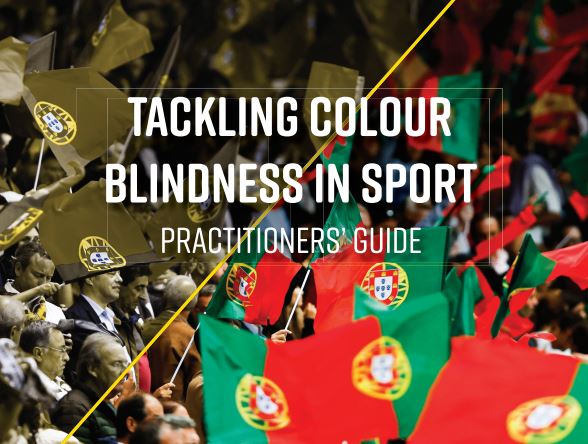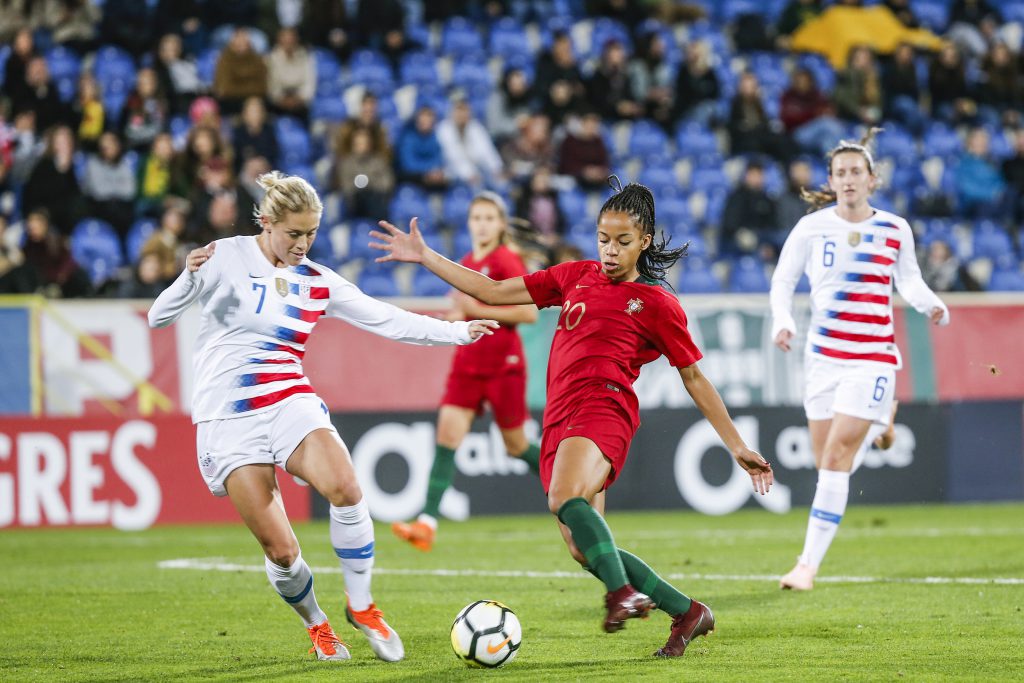Football players shocked when experiencing Colour Blindness
September 6, 2022
For Colour Blind Awareness Day 2022 and in advance of the TACBIS conference (the EU funded Tackling Colour Blindness in Sport project) in November, Colour Blind Awareness and the TACBIS partners have released video clips of current and retired football Internationals learning about the challenges of being a colour blind footballer.
Portuguese players Fábio Carvalho (Portugal and Liverpool), Fábio Silva (Portugal and Anderlecht) and Jéssica Silva (Portugal and SL Benfica Women’s) wore simulation glasses to experience how people with protanopia (severe red vision deficiency) face many challenges when playing football.
“The colour of the cones was very similar to the grass, so it’s kind of hard to know where you’re going and it was very difficult.”
Fábio Carvalho, professional football player for Portugal & Liverpool FC
When Fabio Carvalho was asked if he thought it would have an impact on performance he added “Yes, 100%” and on what he thought about trying to find a pass in a colour blind kit clash game, he laughed “It’s just hope for the best, just hope your pass gets to your team.”
“I’m shocked, I hadn’t any idea it is like this. A lot of players have to try this and maybe the presidents of the clubs … because I think they will change their actions.”
Jéssica Silva, professional football player for Portugal and SL Benfica Women’s
“Colour blindness affects one in 12 men and one in 200 women, so statistically at least one player in every male football squad. A key element of the TACBIS project is to prove the actual prevalence of colour blindness in players of different sports at all levels. To date we’ve been raising awareness of the ‘kit clash’ challenges for colour blind fans and we’re beginning to see changes in kit regulations to address this.”
“However, the latest research focuses upon the challenges faced by colour blind players and how these can be addressed. Elite sport is famous for spending millions to squeeze out tiny marginal gains for player performance, yet at present very little attention is paid to colour blindness by managers and coaches in either elite clubs/Academies or at grass roots. We need to change this.”
Kathryn Albany-Ward, CEO of Colour Blind Awareness
The players and TACBIS project partners will be sharing their videos across social media on 6th September 2022.
Statistics
- Colour vision deficiency (CVD) affects 1 in 12 men/1 in 200 women
- CVD affects 300 million worldwide (33m in Europe, c3m in UK)
- Colour blindness affects ability to distinguish between many combinations of colours, not just reds and greens





